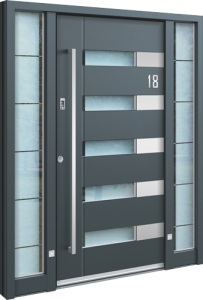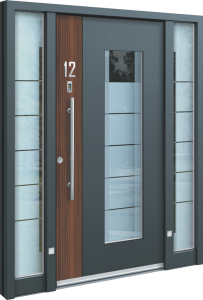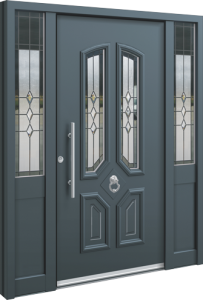


- Aluminium doors are inherently strong and stable and because they have innate design integrity they are very secure and will resist forced entry far better than uPVC, fibreglass composite or wooden doors.
- Almost any door design aesthetic can be produced from aluminium door skins. Computer controlled machinery can create curves, squares or complex shapes to match your desired look.
- Aluminium door skins are perfect for applying textured and wood-effect finishes to. These high quality treatments are ingrained within the door skin and are very hard-wearing and refined.
- Colour preferences are easily catered for in an aluminium entrance door so you can let your imagination run wild. Modern automated paint processes allow you to select just about any internal and external colour combination and the result achieved by uniting aluminium with modern paints is so durable that you can be assured your door will look good for over 20 years, without any significant loss of hue. Composite, uPVC and most Timber doors should not be produced in dark colours like anthracite grey or black as they will distort badly, which is highly unlikely with well-designed and constructed aluminium doors.
- The latest architectural trend is for homes with big glazed openings and facades. This inevitably means that sizeable front and back doors are required. Because aluminium profiles are slim but very strong, aluminium doors can be made much wider and taller than most other materials and can encompass triple glazed glass units. An aluminium entrance door can typically be manufactured around 30% bigger than a composite door.
- Aluminium is one of the most environmentally friendly building materials available and this valuable commodity can be re-used many times over. Thus, what was once a front door could one day be part of an aircraft wing or a laptop computer.